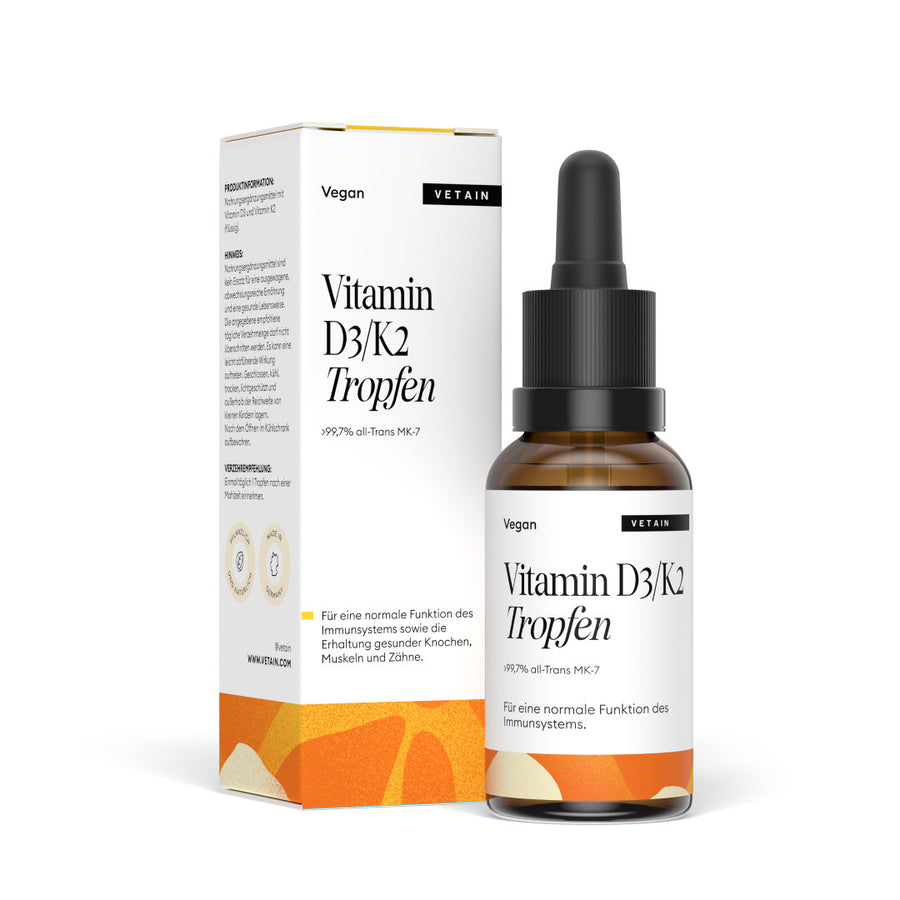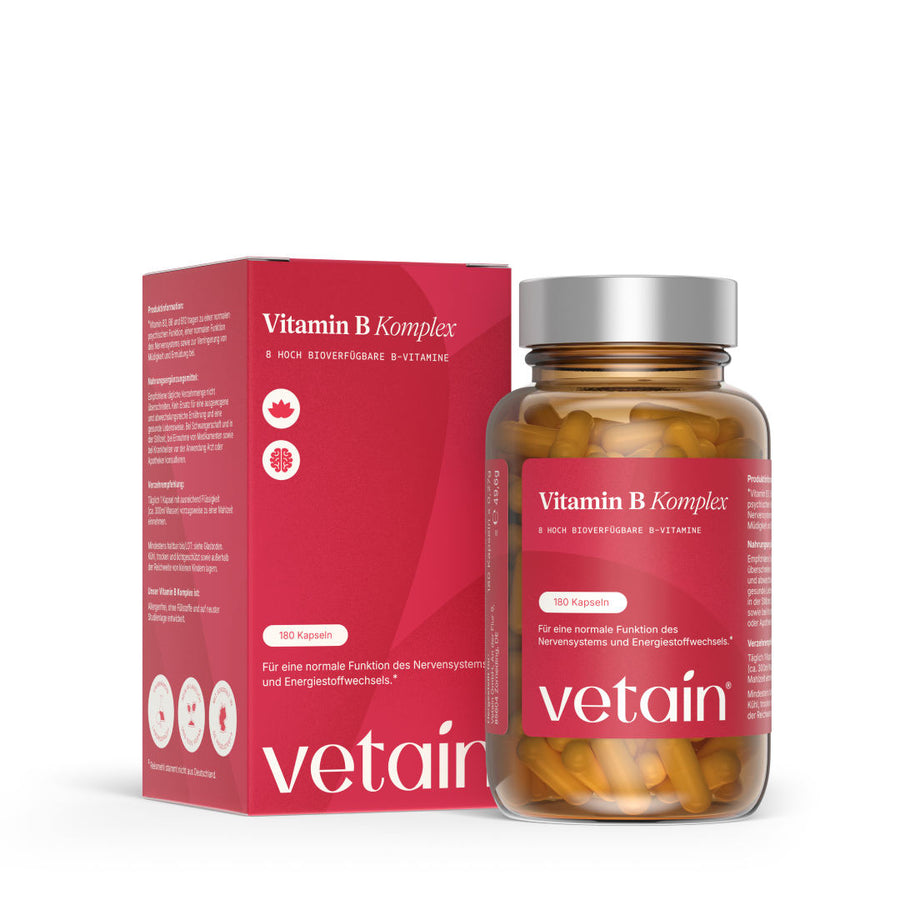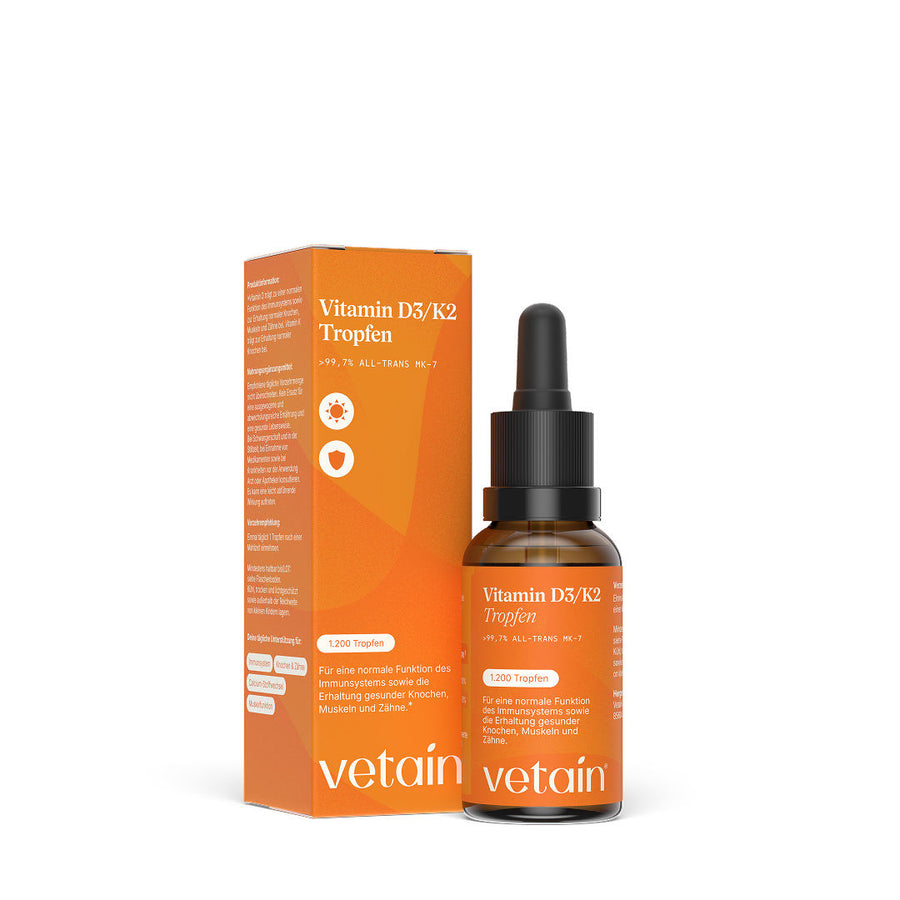Vitamins — everyone knows they’re important, but be honest: could you name off the top of your head which one does what? Or which foods are the best sources? If not, no worries — you’re not alone! Of course, it’s convenient to have all vitamins in one table. One quick look and done. But it’s not quite that simple. What good is a list if you don’t know which ones are truly essential for you, what to watch out for, or whether you might even be getting too much?
That’s why you’ll find not just a table of all vitamins here, but also key background info: what they do, where to find them, and especially how much. Because mindful nutrition is more than just knowing numbers — it’s about understanding what your body really needs.
Vitamins are important — nothing new there
They’re essential nutrients your body needs for countless functions — from energy production and immune support to cell regeneration. They’re involved in many processes, but since the body can’t produce most of them on its own, you have to get them from food.
What vitamins are there? In general, they’re divided into two groups:
Fat-soluble vitamins (A, D, E, K) — stored in the body and don’t need to be consumed daily. However, overdosing can be an issue.
Water-soluble vitamins (B group, C) — the body can’t store these for long, so they must be consumed regularly. Excess is usually excreted.
To help you quickly see which vitamins exist and where they’re found, we’ve summarized all vitamins in a table. But a simple list isn’t very helpful if you don’t understand why these nutrients matter.
All vitamins in one table — finally
Here’s the overview of the 13 essential vitamins:
|
Vitamin |
Function in the body |
Natural sources |
A |
Vision, skin, immune system |
Carrots, liver, spinach, eggs |
D |
Bone metabolism, immune system |
Fatty fish, egg yolk, sunlight |
E |
Protection from oxidative stress, skin, immune function |
Nuts, seeds, vegetable oils, green vegetables |
K |
Blood clotting, bone health |
Leafy greens, liver, dairy products |
B1 |
Energy production, nerve function |
Whole grains, legumes, pork |
B2 |
Cell metabolism, skin, eyes |
Dairy products, eggs, green vegetables |
B3 |
Energy production, nervous system |
Meat, fish, peanuts, whole grains |
B5 |
Fat metabolism, hormone production |
Meat, eggs, whole grains, avocado |
B6 |
Protein metabolism, nerve function |
Bananas, potatoes, poultry, fish |
B7 |
Skin, hair, nails, cell metabolism |
Eggs, nuts, oats, liver |
B9 |
Blood formation, cell growth |
Leafy greens, legumes, liver, eggs |
B12 |
Nervous system, DNA synthesis |
Meat, fish, eggs, dairy products |
C |
Immune system, antioxidant, iron absorption |
Citrus fruits, bell peppers, broccoli, strawberries |
Now you’ve got all vitamins in one table and wonder what all those letters and numbers actually mean? That’s exactly why we want to give you plenty of extra information:
Fat-soluble vitamins:
Vitamin A (retinol, beta-carotene)
Vitamin D (calciferol, also called the “sunshine vitamin”)
%-split_content-%
Vitamin E (tocopherols)
Vitamin K (phylloquinone, menaquinone)
Water-soluble vitamins:
Vitamin B1 (thiamine)
Vitamin B2 (riboflavin)
Vitamin B3 (niacin)
Vitamin B5 (pantothenic acid)
Vitamin B6 (pyridoxine)
Vitamin B7 (biotin)
Vitamin B9 (folic acid)
Vitamin B12 (cobalamin)
Vitamin C (ascorbic acid)
Besides our overview with all vitamins in a table, it can be helpful to know the typical daily needs.
Follow the manufacturer’s directions and your individual values
After seeing all vitamins in one table, the next question is: how much does your body actually need? The answer isn’t that simple, because daily requirements are individual. Factors like age, sex, activity level, and overall health play a big role. While some vitamins can be stored in the body, others need to be consumed daily. Certain life situations — like intense exercise, stress, or specific diets (e.g., a vegan diet) — can also change your needs. There are, however, rough general guidelines.
If you use supplements, you’ll find a recommended daily serving on every quality product. It usually states what percentage of daily needs a serving covers. If you follow these directions and choose high-quality products, you’re typically well covered. That said, micronutrients shouldn’t be taken blindly. Targeted intake is better than a “more is more” approach where you take a whole list of vitamins every day. If you’re unsure whether you have a deficiency, it’s worth checking individually — either by adjusting your diet or through targeted supplementation as needed.
%-product_content-%
Vitamin deficiency & overdose — what you should know
Vitamins are essential for many bodily processes — but both deficiency and overdose can be problematic. While some can be stored by the body, others have to be consumed regularly because they’re excreted quickly.
Fat-soluble vitamins (A, D, E, K) are stored in fat tissue and the liver. This means that long-term overdosing can be an issue. Vitamins A and D in particular can have unwanted effects in excessive amounts.
Water-soluble vitamins (B group, C) aren’t stored and excess is usually excreted via urine. “Too much” is less often critical here — but limits still exist.
People with one-sided diets or specific dietary patterns (e.g., veganism, strict diets) should make sure they’re getting sufficient amounts of all essential vitamins. While our table shows which foods contain the most important ones, it’s just as important to ensure adequate intake in everyday life. That doesn’t mean everyone should pop vitamin pills at random. Targeted supplementation makes sense when there’s genuinely increased need or a confirmed deficiency. Those who eat a balanced diet with quality foods can often cover their vitamin needs quite well already.
Conclusion: All vitamins in one table — a great overview, but not enough on its own
What are the most important vitamins? Well, all of them — but only up to a point. We didn’t want to just present all vitamins in a table; we wanted to give you the knowledge about why they matter and what to look out for. Mindful nutrition is more than reading numbers — it’s about understanding what your body truly needs and how to supply it. With this overview, you have everything at your fingertips — a practical guide for a balanced diet. Whether you meet your needs through food or supplement strategically — the key is paying attention to what your body actually needs and not randomly taking everything from a list.















 8 Min
8 Min
 Zuletzt aktualisiert am 03.11.2025
Zuletzt aktualisiert am 03.11.2025




